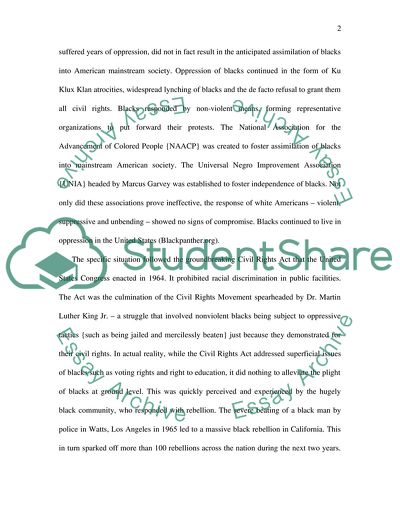Cite this document
(The Black Panther Party Case Study Example | Topics and Well Written Essays - 2780 words, n.d.)
The Black Panther Party Case Study Example | Topics and Well Written Essays - 2780 words. Retrieved from https://studentshare.org/politics/1543438-was-the-black-panther-party-a-successful-force-for-change-during-the-civil-rights-years
The Black Panther Party Case Study Example | Topics and Well Written Essays - 2780 words. Retrieved from https://studentshare.org/politics/1543438-was-the-black-panther-party-a-successful-force-for-change-during-the-civil-rights-years
(The Black Panther Party Case Study Example | Topics and Well Written Essays - 2780 Words)
The Black Panther Party Case Study Example | Topics and Well Written Essays - 2780 Words. https://studentshare.org/politics/1543438-was-the-black-panther-party-a-successful-force-for-change-during-the-civil-rights-years.
The Black Panther Party Case Study Example | Topics and Well Written Essays - 2780 Words. https://studentshare.org/politics/1543438-was-the-black-panther-party-a-successful-force-for-change-during-the-civil-rights-years.
“The Black Panther Party Case Study Example | Topics and Well Written Essays - 2780 Words”, n.d. https://studentshare.org/politics/1543438-was-the-black-panther-party-a-successful-force-for-change-during-the-civil-rights-years.


